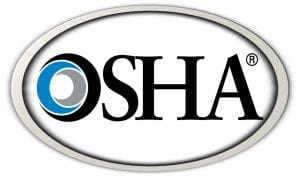 The Occupational Safety Health Administration’s (OSHA) 29 CFR 1926 Subpart D, is better known as the Lead In Construction rule (1926.62). OSHA is a part of the U.S. Department of Labor and is in charge of the safety of workers and employees. It is important to note, that OSHA many times will fine contractors that use sub-contractors, which aren’t provided with safety precautions.
The Occupational Safety Health Administration’s (OSHA) 29 CFR 1926 Subpart D, is better known as the Lead In Construction rule (1926.62). OSHA is a part of the U.S. Department of Labor and is in charge of the safety of workers and employees. It is important to note, that OSHA many times will fine contractors that use sub-contractors, which aren’t provided with safety precautions.
Of all the lead based paint laws, OSHA’s is the most costly and complicated. In fact, if you are following 1926.62, you will find that you are already doing many of the things found in EPA’s Renovation, Repair and Painting (RRP) Rule and HUD’s Lead Safe Housing Rule (LSHR). Where in the RRP and LSHR, lead based paint is 1 mg/cm2 or more, in the OSHA standard any level of lead found in paint causes OSHA compliance to start.
Compliance requires that employees must be provided …
- Respirators and the company must have a respirator program that complies with 1910.134.
- Protective clothing (full body disposable suits, gloves, hats, booties, face shields/vented goggles).
- A clean area for changing and storing clothes.
- An area to wash hands (and face)
- Blood lead test.
- Training on 1926.62
And the firm follows OSHA requirements and has a written compliance program. This must be done on each project that disturbs a painted or stained surface, unless proof can be shown that no lead is in the paint or that the activities will not exceed the Permissible Exposure Limit (PEL) of 50 mcg/m3.
How can you prove activities will not exceed the PEL?
- Via an XRF you will need to determine the lead content of each component.
- You will then need to use an air sampler on each type of work you do.
- Record the readings.
Example: If you are going to hand sand trim and you know the lead content is 5 mg/cm2. Take an air sample during the hand sanding and if you find out that this is under 30 mcg/cm3 (action level), record this. In the future, any time you hand sand trim that is 5 mg/cm2 or less … you don’t need to take precautions. Of course, using a power sander would be a different air test, as would be scraping and any other different type of process performed.
For additional information:
Overview http://www.osha.gov/Publications/osha3142.pdf
Actual Law
